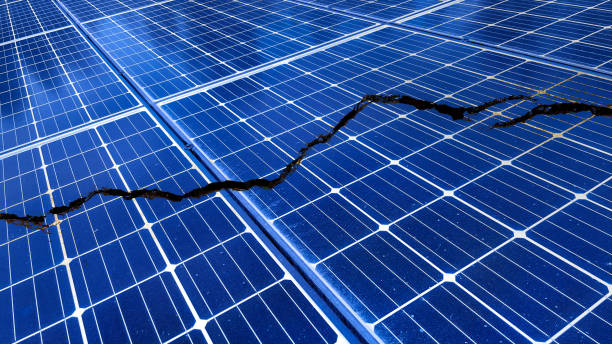What Happens If You Damage a Solar Panel
Solar panels are a great investment for sustainable energy production, offering long-term savings and environmental benefits. However, accidents or extreme weather conditions can sometimes lead to damage. Understanding the consequences of a damaged solar panel is crucial to maintain optimal energy production and avoid potential hazards. In this blog, we’ll dive into what happens when a solar panel is damaged and what you can do about it.
Types of Solar Panel Damage
Solar panels are designed to be robust and durable, but they aren’t completely immune to damage. The most common types include:
- Physical Damage
- Cracks or chips on the glass surface can occur due to hailstorms, falling debris, or accidental impacts. These visible damages can significantly affect the panel’s efficiency.
- Microcracks
- Tiny cracks invisible to the naked eye can form within the photovoltaic cells. These often develop due to temperature fluctuations or improper handling during installation.
- Delamination
- Over time, the protective layers of a solar panel may separate, exposing the internal components to moisture and reducing efficiency.
- Electrical Damage
- Faulty wiring, burned-out diodes, or broken connections within the panel can hinder energy transfer.
- Weather-Related Damage
- Extreme weather events like hail, lightning, or strong winds can compromise the structural integrity of your solar panels.
Immediate Effects of a Damaged Solar Panel
When a solar panel is damaged, several issues may arise, including:
- Reduced Efficiency
- Even minor damage can lead to a drop in energy production. Cracks or broken cells disrupt the flow of electricity, lowering the panel’s overall performance.
- Potential Hot Spots
- Damaged cells can overheat, creating “hot spots” that not only reduce efficiency but can also pose a fire risk.
- Water Intrusion
- Cracks or delamination may allow water to seep into the panel, leading to corrosion and further degradation of internal components.
- Complete Panel Failure
- Severe damage might render the panel entirely non-functional, necessitating replacement.
- Warranty Voiding
- Physical damage caused by accidents or improper maintenance might void your solar panel’s warranty, leaving you responsible for repair or replacement costs.
Long-Term Impacts of Ignoring Damage
Ignoring a damaged solar panel can lead to:
- Lower Energy Output: Reduced efficiency will mean lower energy savings over time.
- Higher Repair Costs: Neglecting minor issues can cause them to escalate into more significant, costly repairs.
- Safety Hazards: Overheated cells or exposed wiring can increase the risk of fires or electrical shocks.
- Reduced Lifespan: A damaged solar panel is likely to wear out faster, shortening its useful life.
Steps to Take When a Solar Panel is Damaged
If you suspect your solar panel is damaged, follow these steps to address the issue:
- Inspect the Panel
- Look for visible cracks, chips, or discoloration. If it’s safe, check for loose wires or unusual heat spots.
- Turn Off the System
- For safety, shut down your solar system before inspecting or handling any damaged components.
- Contact a Professional
- Always consult a certified solar technician to assess the damage and recommend repairs or replacements. Avoid DIY fixes, as improper handling can worsen the problem or void your warranty.
- Claim Warranty or Insurance
- If the damage is covered under warranty or your home insurance policy, file a claim to reduce repair or replacement costs.
- Consider Temporary Solutions
- If immediate replacement isn’t feasible, a technician might suggest bypassing the damaged panel to restore partial system functionality.
Preventing Solar Panel Damage
While you can’t prevent every possible incident, you can take steps to minimize the risk of damage:
- Choose Durable Panels: Invest in high-quality panels designed to withstand extreme weather conditions.
- Install Protective Measures: Use protective covers or guards to shield your panels from hail or falling debris.
- Schedule Regular Maintenance: Have your solar system inspected periodically to identify and address minor issues before they escalate.
- Proper Installation: Ensure panels are securely installed by professionals to avoid damage caused by loose mounting.
Conclusion
Damaged solar panels can lead to reduced energy efficiency, increased repair costs, and even safety risks if left unaddressed. Promptly inspecting and repairing any damage is essential to maintain the performance and longevity of your solar system. Regular maintenance, professional assessments, and investing in durable panels can save you from potential headaches down the road.
If you’ve noticed any signs of damage to your solar panels, don’t wait. Contact a qualified technician to get your system back to optimal performance. Protect your investment and continue enjoying clean, renewable energy for years to come!

